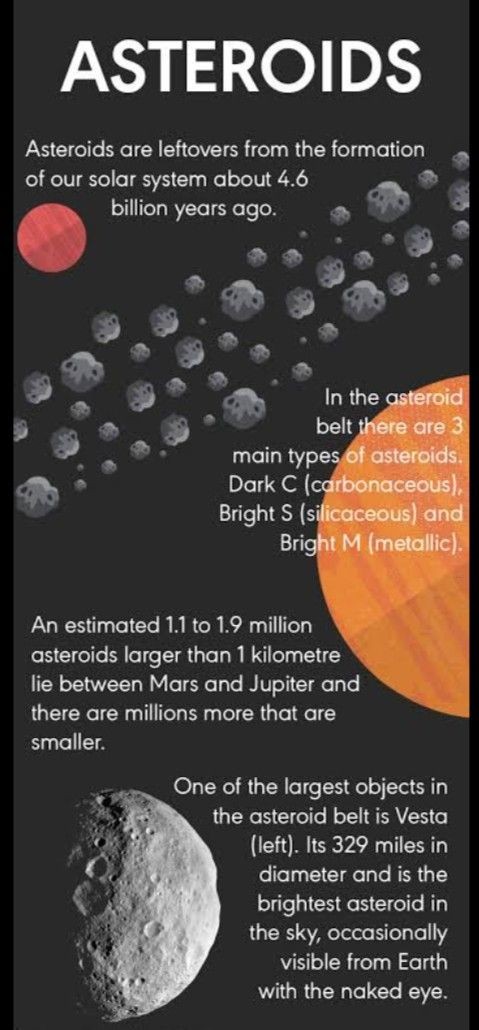Home > Sections > The Universe > The Asteroid Belt
Last Updated: 14th June 2023
ARCHIVED ITEM: this page is no longer updated.
The Asteroid Belt
Keywords
Asteroid, planetoid, Jupiter, Mars, orbital, belt, Ceres, Vesta, Pallas, Hygiea, classification, S-type, C-type, M-type, V-type, basaltic, carbonaceous, silicate, metal-rich.
Introduction
Between Mars and Jupiter lies an absolutely massive amount of planetoids or asteroids, all formed in an orbital belt. But, how did they get there, and why are they there?
So, What Happened?
All of the planets were formed by gravitational pull from the Sun. And although some theories of the asteroid belt are that they are what remains of a planet formation (which effectively would mean that there would be an extra planet between Mars and Jupiter), this theory was dismissed after extensive research of the area. Scientists found out that the asteroids masses together were significantly less than Pluto, and even around 4% of the Moon.
And what is keeping them from moving together as a planet? Jupiter. Gravity pull from Jupiter meant that asteroids in the belt became violent and sped up rather than slowing down to form together properly. And it's still working today to make sure they don't form.
Objects in the Asteroid Belt
One of the largest objects in the belt is Ceres. It's size is big enough to be classed as a dwarf planet, and three other celestial bodies - Vesta, Pallas and Hygiea - are slightly smaller in size.
The majority of other objects are much smaller, and the smallest objects in the belt are merely particles of dust.
Classification & Other Characteristics
Within the asteroid belt, there are three main classifications of materials - carbonaceous (C-type), silicate (S-type) and metal-rich (M-type).
With this classification you could see that there are groups of asteroids with similar characteristics that orbit in space as families. Although they may travel through space as these families, it would be quite difficult to move from one to another, as they are in fact quite far apart. Though there are millions of asteroids in the belt, they are spread so far apart, that it is quite easy to traverse without being hit by anything.
A fourth classification is of basaltic type of rocks, which are more rare. In fact, so rare that theorists think that most of the origins of the basaltic type came from Vespa, hence the name of V-type being given.
Interesting fact: because there are a whole host of materials in asteroids, the prospect of mining them for valuable metals or minerals that are within them is very desirable, but not yet a reality.
Exploration of the Belt
Three main missions have seeked out to photograph and study the area - Dawn, NEAR Shoemaker and Hayabusa missions have all studied asteroids in the belt, for a give length of time.
But that's not all, as other missions that have passed by through the years have been able to photograph parts of the belt on their continuing missions through the asteroid belt.
Here is a YouTube video from Cosmoknowledge on the Asteroid Belt:




 Mars
Mars

